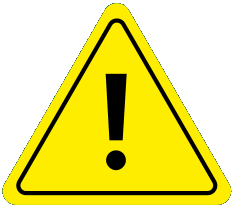Colon Cancer Screening
Colonoscopy
A colonoscopy lets your provider examine the lining of your large intestine (colon) for abnormalities by inserting a thin flexible tube, as thick as your finger, into your anus and slowly advancing it into the rectum and colon. This instrument, called a colonoscope, has its own lens and light source and allows your provider to view images on a video monitor.
How do I prepare for a colonoscopy?
Colonoscopy prep isn’t what you might call “fun,” but cleaning out your colon is the most important part of your preparation. Your provider will explain what dietary restrictions to follow and what cleansing routine to use. The colon must be completely clean for the procedure so your provider has a clear view to find any hidden polyps or cancer, so be sure to follow your provider’s instructions carefully. Once you’re done prepping, the hardest part is over!
What happens during a colonoscopy?
You might feel pressure, bloating, or cramping during the procedure, but it rarely causes pain. Your anesthesia provider will administer moderate to deep sedation, so you are relaxed, which helps the surgeon navigate your intestine. You will lie on your side or back while your provider slowly advances a colonoscope along your large intestine to examine the lining. Your provider will examine the lining again while slowly removing the colonoscope. The procedure itself usually takes less than 45 minutes, but you should plan on two to three hours for waiting, preparation and recovery.
What if the colonoscopy shows something abnormal?
If your provider thinks an area needs further evaluation, they might pass an instrument through the colonoscope to take a biopsy (a small sample of the colon lining). Biopsies are used to identify many conditions, and your provider will often take a biopsy even if they do not suspect cancer. If a colonoscopy finds bleeding, your provider might control the bleeding through the colonoscope by injecting medications by cauterization (sealing off bleeding vessels with heat treatment) or by use of small clips. Your provider might also find polyps during colonoscopy, which can typically be removed during the examination. These procedures don’t usually cause any pain.
What are polyps and why are they removed?
Polyps are abnormal growths in the colon lining that are usually benign (non-cancerous). They vary in size from a tiny dot to several inches. It is difficult to tell a benign polyp from a malignant (cancerous polyp) by its appearance, so your provider will usually remove polyps for analysis. Because cancer begins in polyps, removing them is an important means of preventing colon cancer.
What happens after a colonoscopy?
You will be monitored until most of the effects of the sedative have worn off. You might have some cramping or bloating because of the air introduced into the colon during the examination. This should disappear quickly when you pass gas. Your provider will explain the results of the examination to you, and you may need to wait for the results of any biopsies performed. If you received a sedative during the procedure, someone must drive you home and stay with you.
Cologuard
Cologuard is a minimally invasive stool-based DNA test that you can complete in the privacy of your own home. It works by detecting blood or protein in your stool that may indicate cancer. The kit is mailed directly to your home, which you can complete and mail back without having to come in for an appointment. You also don’t have to follow strict preparation instructions such as following a special diet, enduring a bowel prep, or having a pre-op physical. Your provider would then discuss the results with you. Cologuard is typically done every three years.
FIT Test
Like Cologuard, a fecal immunochemical (FIT) test is a stool-based colon cancer screening test that you can do in the privacy of your own home. It detects hidden blood in your stool, the reason being that cancerous polyps are often fragile and bleed easily as stool passes, but there is rarely enough blood to be seen in stool with the naked eye. Your provider will give you the test kit. Then you must collect several stool samples at home, place them on a card or in a tube, and mail them to a testing facility. FIT testing must be done once a year.
Which screening test is right for you?
If your provider recommends that you have a colon cancer screening test, you may be eligible for any of these tests. Your eligibility is determined by your family history, whether you are at high or low risk for colon cancer, and if you are exhibiting any symptoms related to colon cancer. However, if you opt for Cologuard or FIT testing and they come back positive, your provider may order a colonoscopy.
Talk to your provider about which test is right for you.
Preparing for your colonoscopy?
Here are some materials to get you ready for your scheduled colonoscopy:

